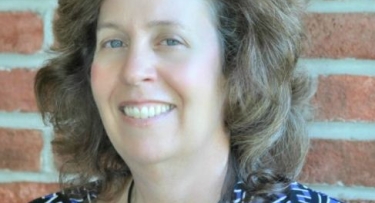Mercy Professor Published in Physical Therapy Education Journal

Ruth Hansen — associate professor of physical therapy at Mercy’s School of Health and Natural Sciences and director of the physical therapy clinical education program — co-authored an article examining the difficulties students face during clinical experiences in physical therapy programs. The article, entitled “Physical Therapist Student Difficulty in Clinical Education Settings: Incidence and Outcomes,” was published in the Journal of Physical Therapy Education in June.
About four years ago, Hansen and her three co-authors — lead author Nicki Silberman at Hunter College, Vicki LaFay at Clarkson University and Patricia Fay at Rutgers University — noted that some students at each of their schools were having difficulties in physical therapy clinical experiences, meaning that they either failed a clinical experience or required significant intervention to complete it. The co-authors decided to examine this topic more closely in order to better understand students’ difficulties and learn how to prevent or fix them.
Clinical education is an essential component of every physical therapy program, enabling students to apply their knowledge and practice their skills and enabling schools to assess students’ competence as physical therapy professionals. Hansen explains: “The clinical experience is really when [students are] expected to function as physical therapists. Our students are going out to work with the public, and if they’re not safe, they could hurt somebody. So we can’t just pass a student who is a little weak. A written exam [like the National Physical Therapy Examination] doesn’t necessarily catch issues in the affective [attitude] and psychomotor [physical skill] domains; it catches issues in the cognitive [knowledge] domain. But being a physical therapist requires much more than just knowing how to do something.”
When a student struggles during the clinical experience, Hansen explains, it is very labor-intensive because both the clinical instructor and the director of clinical education get involved to try to help the student. In addition, it can be devastating for students to invest significant amounts of time and money in a physical therapy program only to discover toward the end that they may not graduate because they cannot complete a required clinical experience.
Hansen and her co-authors designed a study that would determine trends related to the difficulties students faced in clinical experiences with the ultimate goal of improving how physical therapy programs prepare students for and/or support them during clinical experiences. To gather data for the study, the co-authors sent surveys to directors or coordinators of clinical education at all the schools in the New York/New Jersey Physical Therapy Clinical Education Consortium, requesting information about their programs and any students who had difficulty in the clinical experience — including the setting of the clinical experience (e.g., acute care, rehabilitation), the level of the clinical experience (i.e., first time, intermediate, final), the domain of learning the difficulty was in (i.e., cognitive, psychomotor, affective), the interventions that were used and their success rates, and demographic information about the students who had difficulties.
They found that students most often experienced difficulties in acute care and outpatient settings respectively, though they struggled in different domains of learning in each of these settings. In acute care settings, students’ difficulties were most commonly in the affective domain and were present at all levels of clinical experiences. Hansen explains that this makes sense because the acute care setting requires physical therapists to pay attention to nuanced medical conditions and work closely with several other professionals to provide care, which requires strong affective performance. In outpatient settings, students’ difficulties were most commonly in the cognitive domain during the intermediate and final levels of clinical experiences. Hansen explains that this also makes sense because outpatient settings require high levels of anatomical knowledge. Students need to know the origins and insertions of muscles and the special tests that stress each ligament.
Now that the co-authors understand more about the difficulties students face in clinical experiences, Hansen reports that they hope to conduct a follow-up study to examine the most and least successful interventions colleges and universities can use to prevent and/or fix these difficulties.
These two studies — the one that is completed and the one that is planned — will help colleges and universities anticipate when and why students typically experience difficulties in clinical experiences and either prevent these difficulties or set up effective interventions in advance. This work will extend far beyond Mercy and the other co-authors’ schools to impact the physical therapy education field as a whole. In this way, Hansen and her co-authors honor Mercy’s commitment to serving others.
